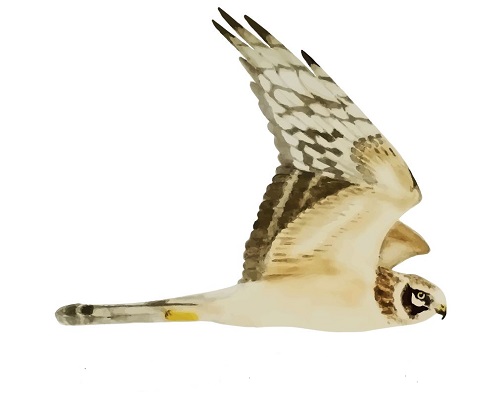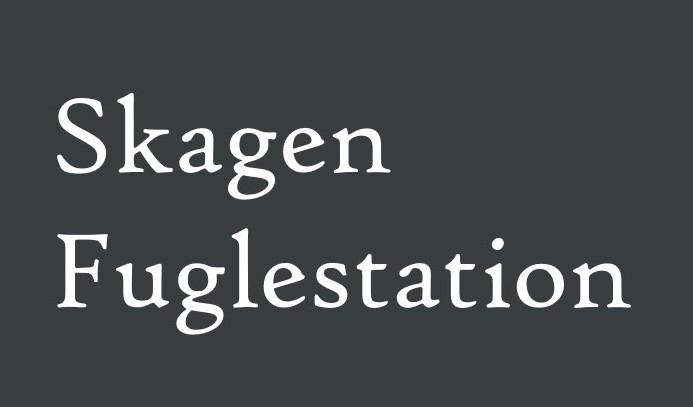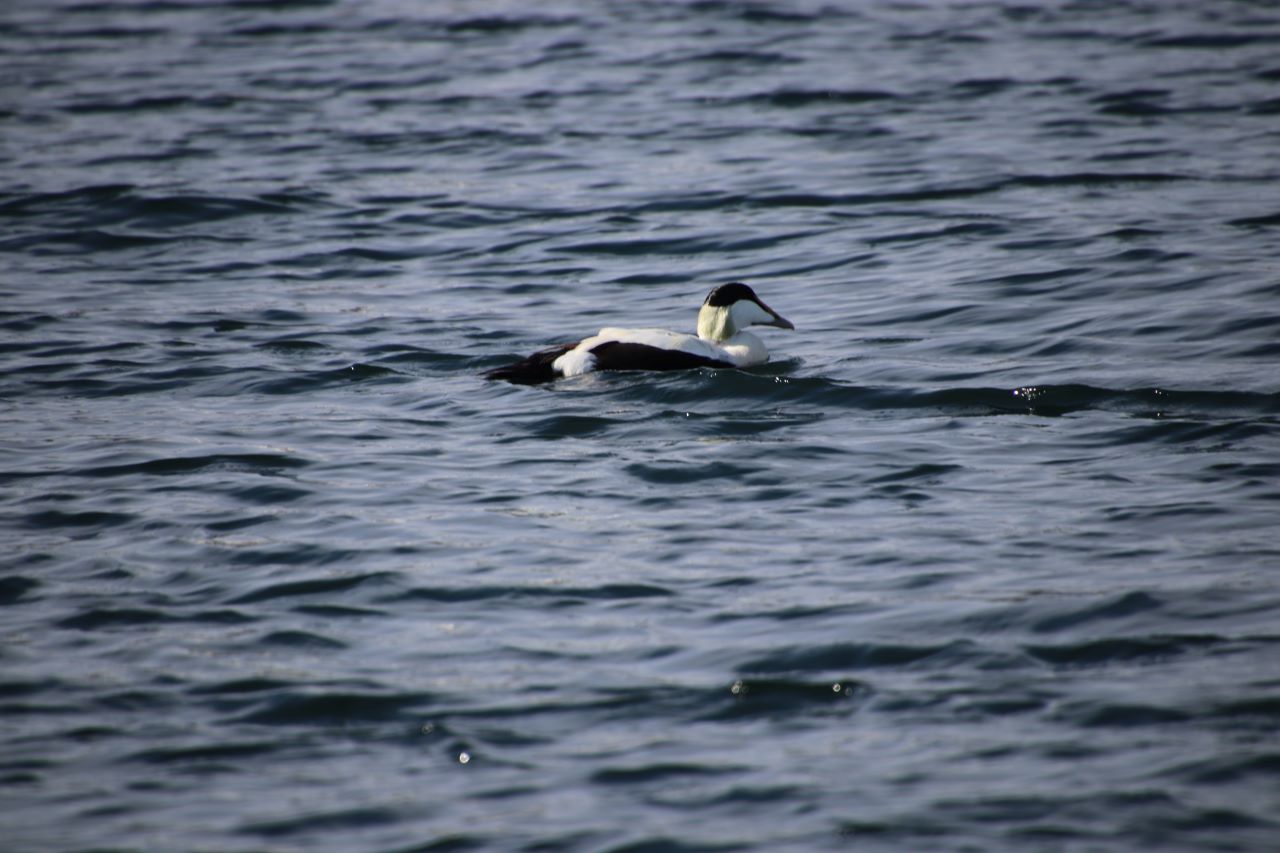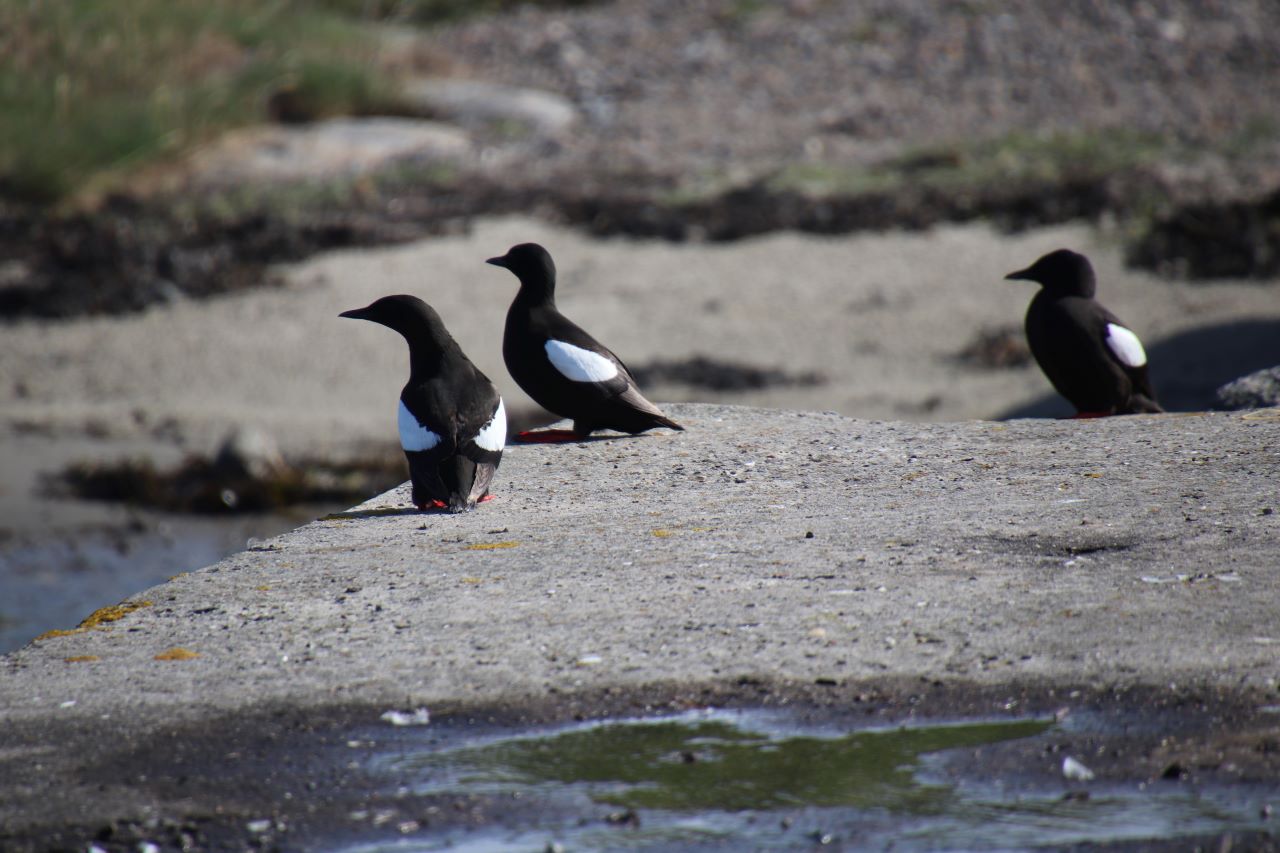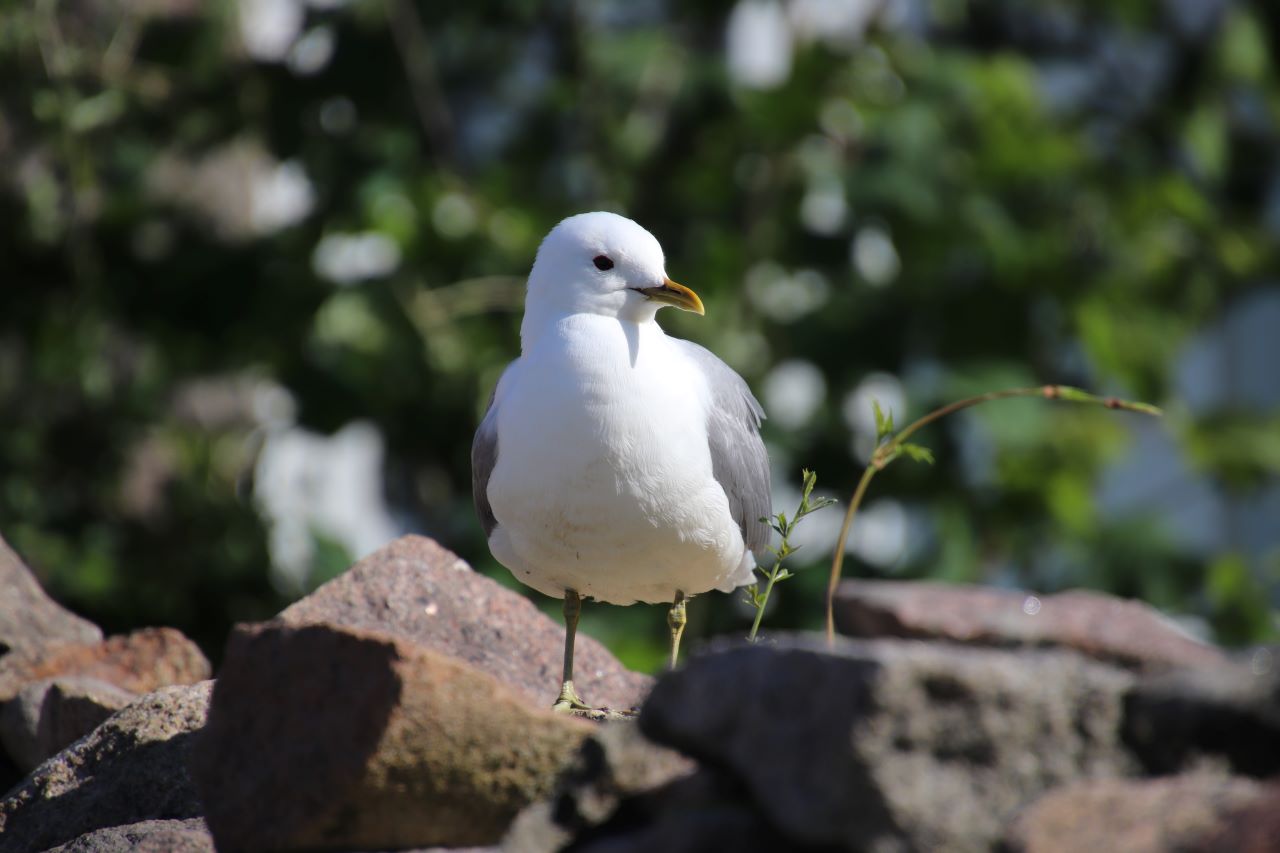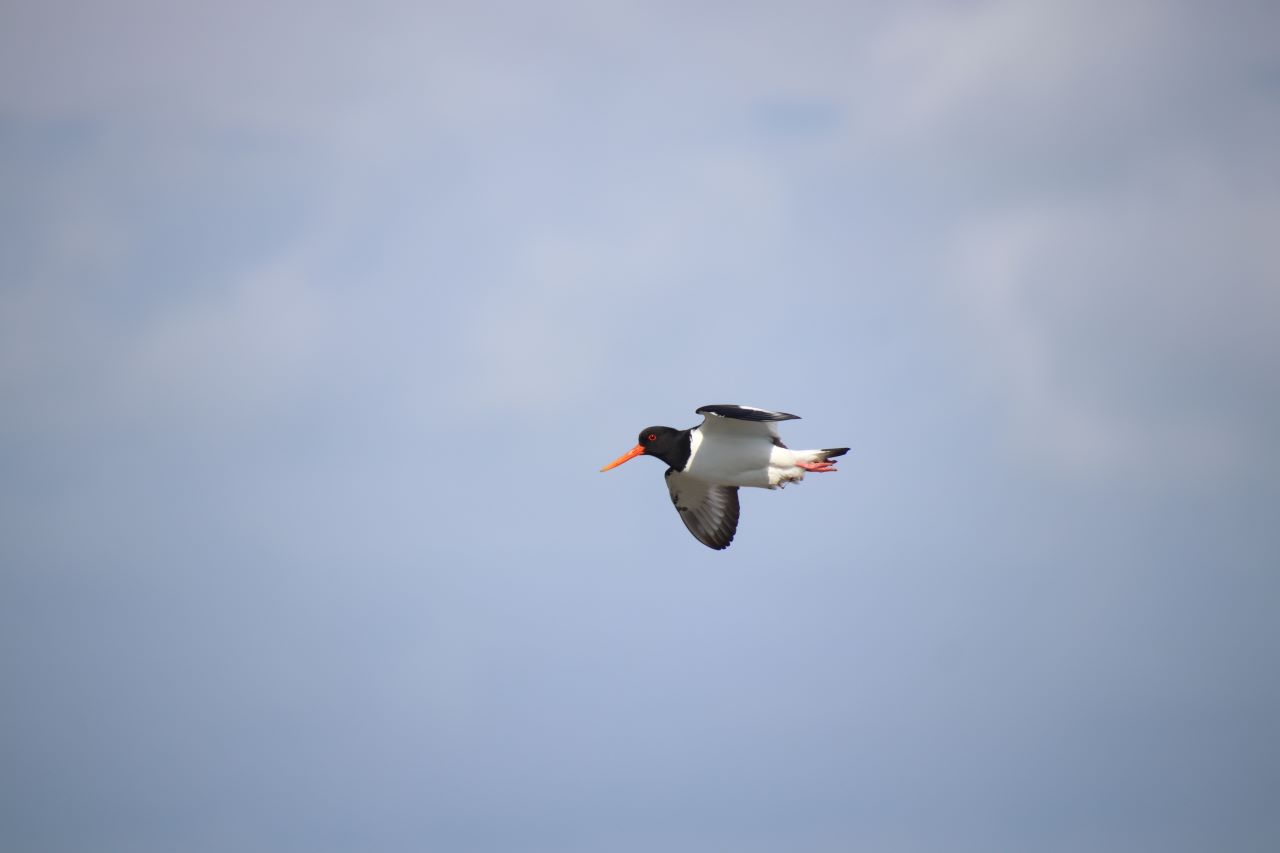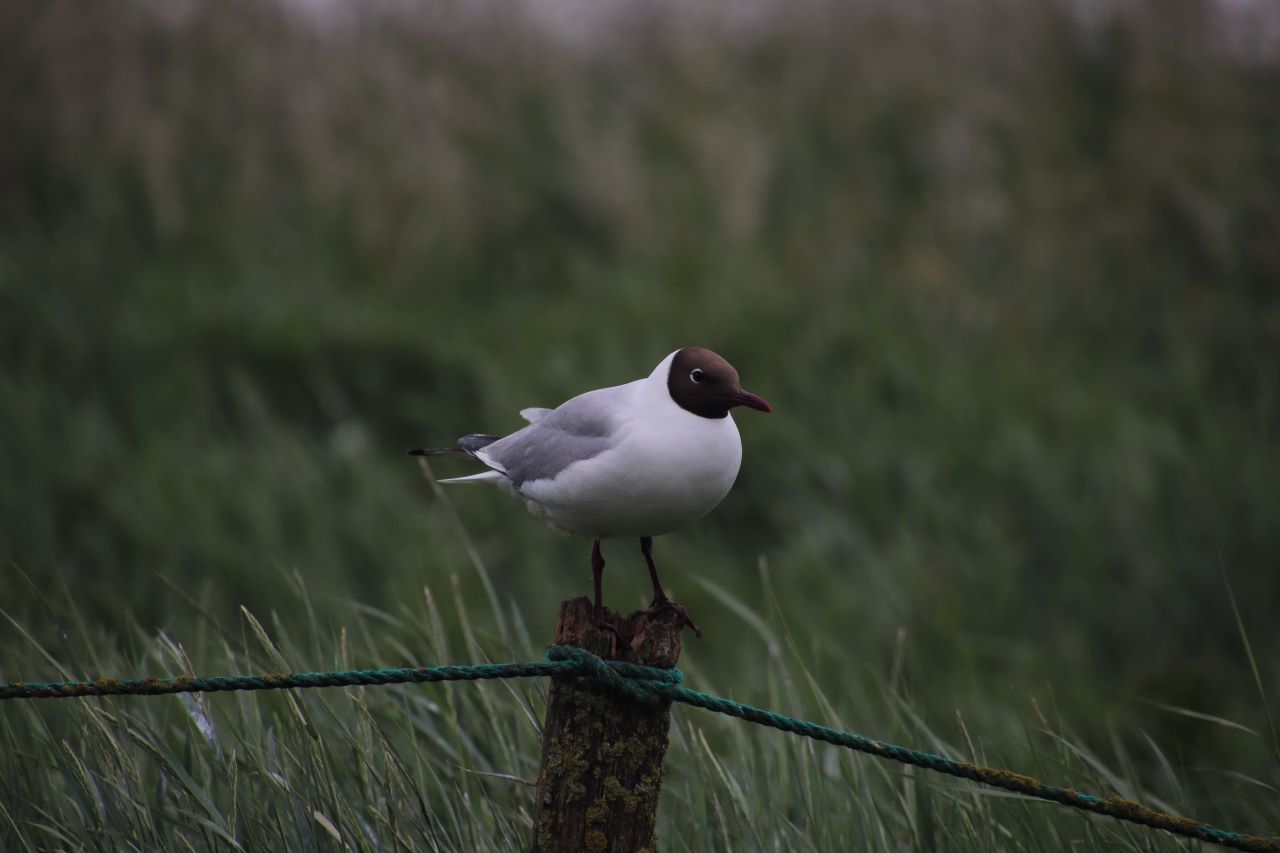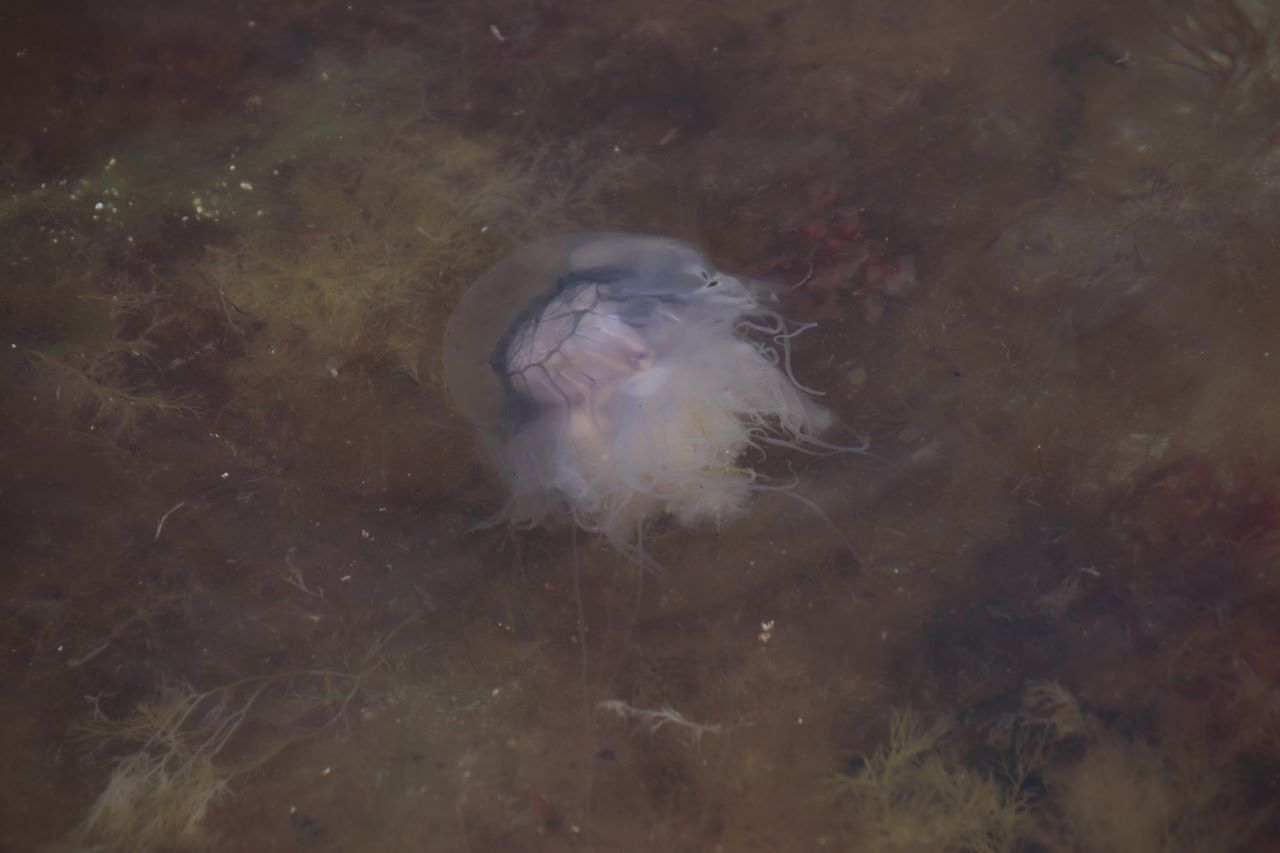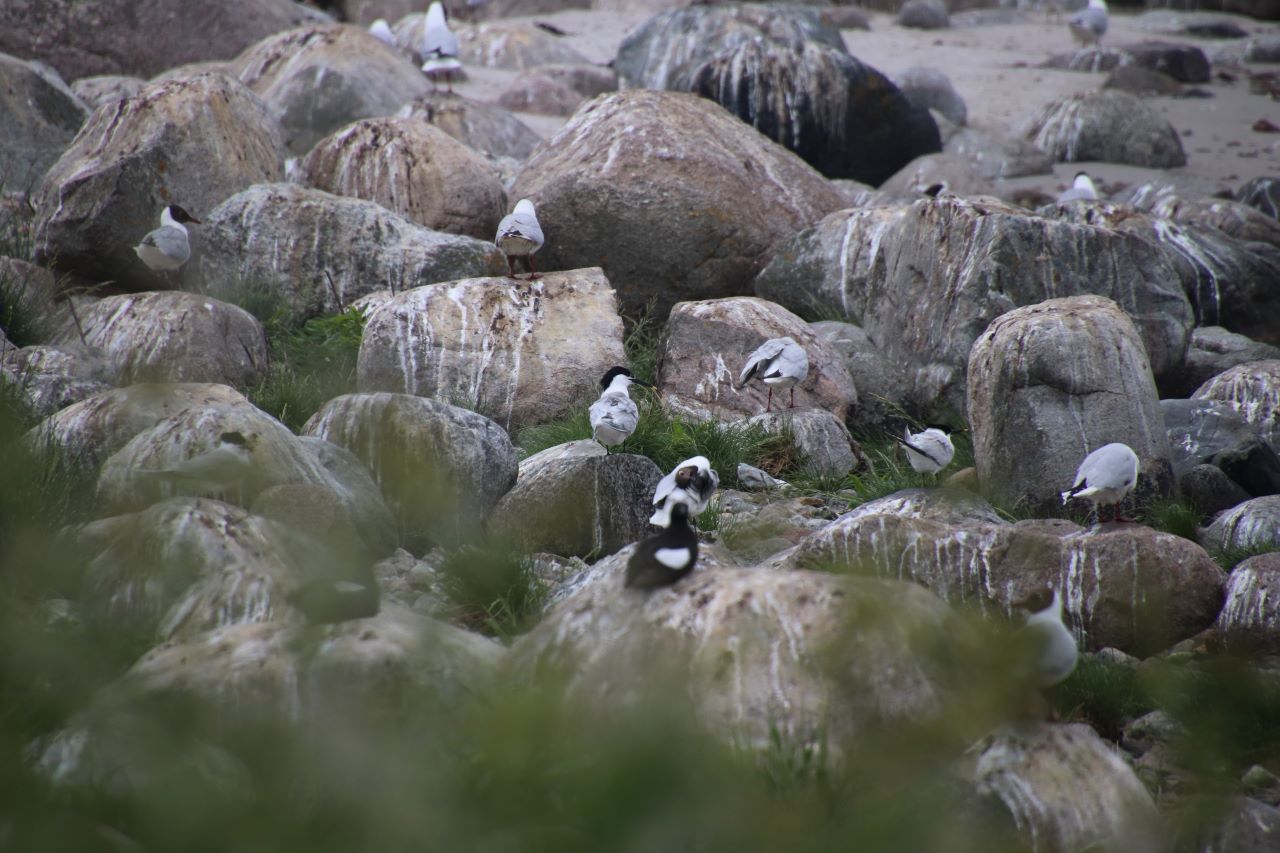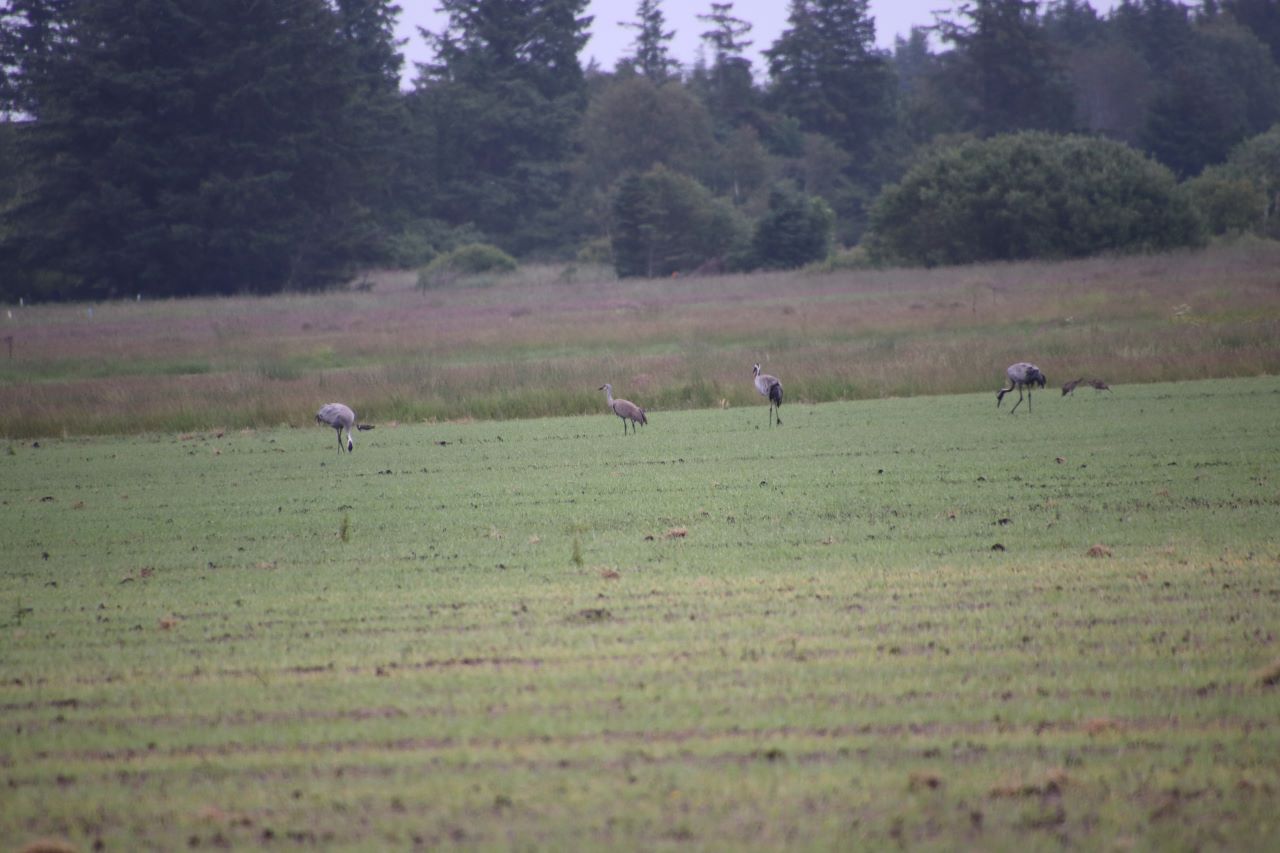Her på Skagen Fuglestations blog bringes korte nyheder i dagbogsformat om hændelser på fuglestationen.
Hayley Migrates West, Guillemot Frenzy!
This morning was a grey one, rainy, cold, and all our hearts felt the dark rift of Hayley’s departure. We shared one last group hug before Karen-Marie and Søren took Hayley to the train station. From bog witches, to toothbrush parties, to building weevil kingdoms, we have made many beautiful memories during Hayley’s stay here, and we all wish her the best of luck in Wales (and some good rest at home for the next 3 weeks). So to Hayley: hej hej and vi ses from SKAF, may our paths cross again some day!
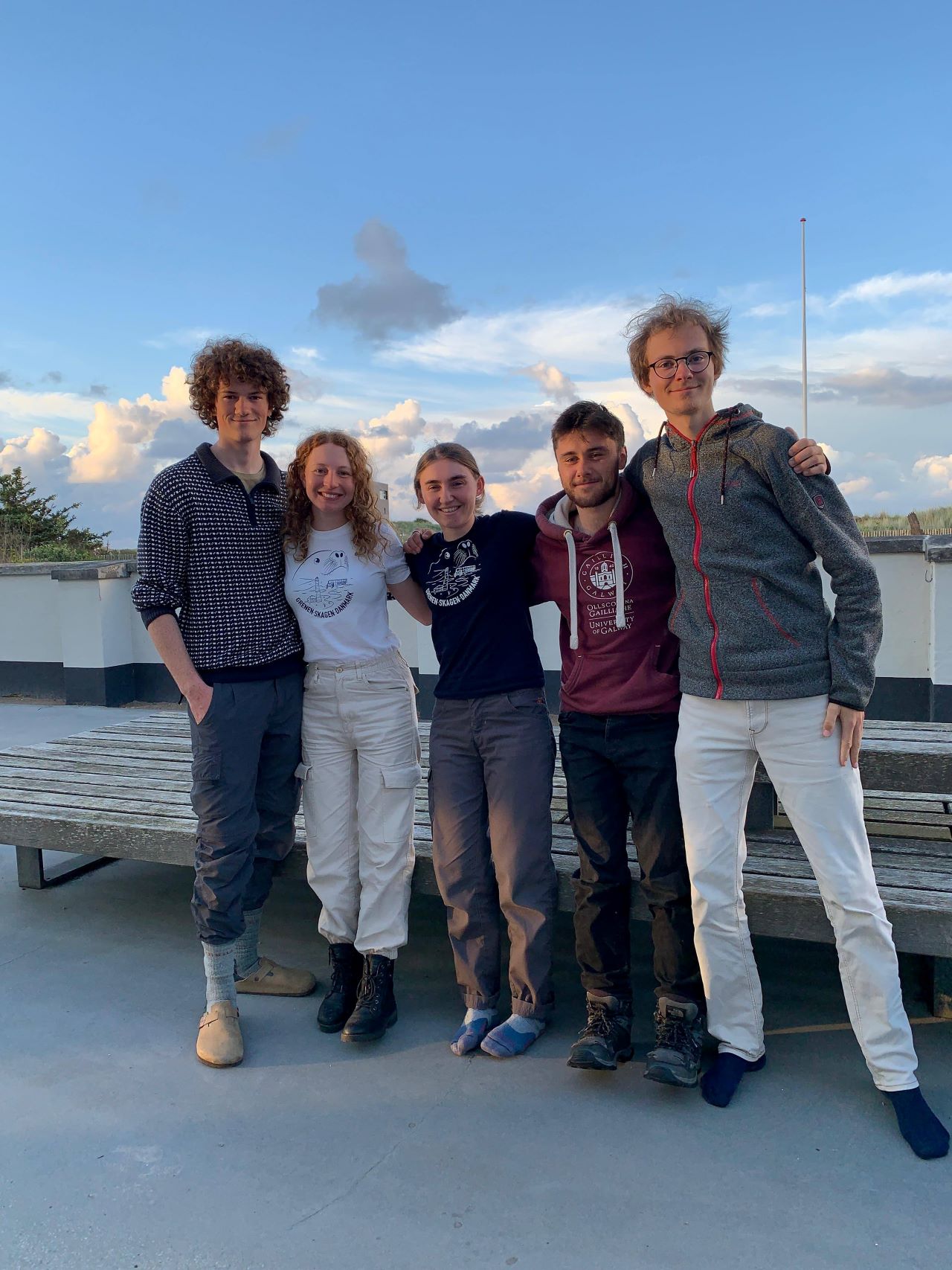
Team SKAF Spring 2024! Magnus Houen Lauritsen, Isis Khalil, Hayley Land, Seán Walsh, Simon Kiesé.
Fortunately, our routine was abruptly interrupted by today’s plans to visit Hirsholm, we had a nice amount of rest, some breakfast, and then we were off, with Seán joining Karen-Marie and Søren, and Simon and I joining Lars and his wife. Once we got to Frederikshavn, we were immediately greeted by Common Eiders (Ederfugl) and breeding Common Terns (Fjordterne), that was a good start!
Common Eider (Ederfugl).
Then we got introduced to our beautiful and valiant steed: SeaDog! SeaDog carried us through the Kattegat with ease, weaving through the waves and giving us all an exciting (and sick-free!) trip. Upon nearing the island of Hirsholm we had the most incredible sight, the early morning sun shone down on the few yellow homes that populate the island, and the lighthouse, while thousands of seabirds took to the skies to make their presence known. The number of Black Guillemots (Tejst) was absolutely crazy, they were sitting on every stone, their bright red feet peaking out from beneath their stunning black-and-white plumage. Many words filled my head, but now that I sit to write about the experience, none seem quite adequate enough to communicate the feeling that view gave us. Cinematic in every way.
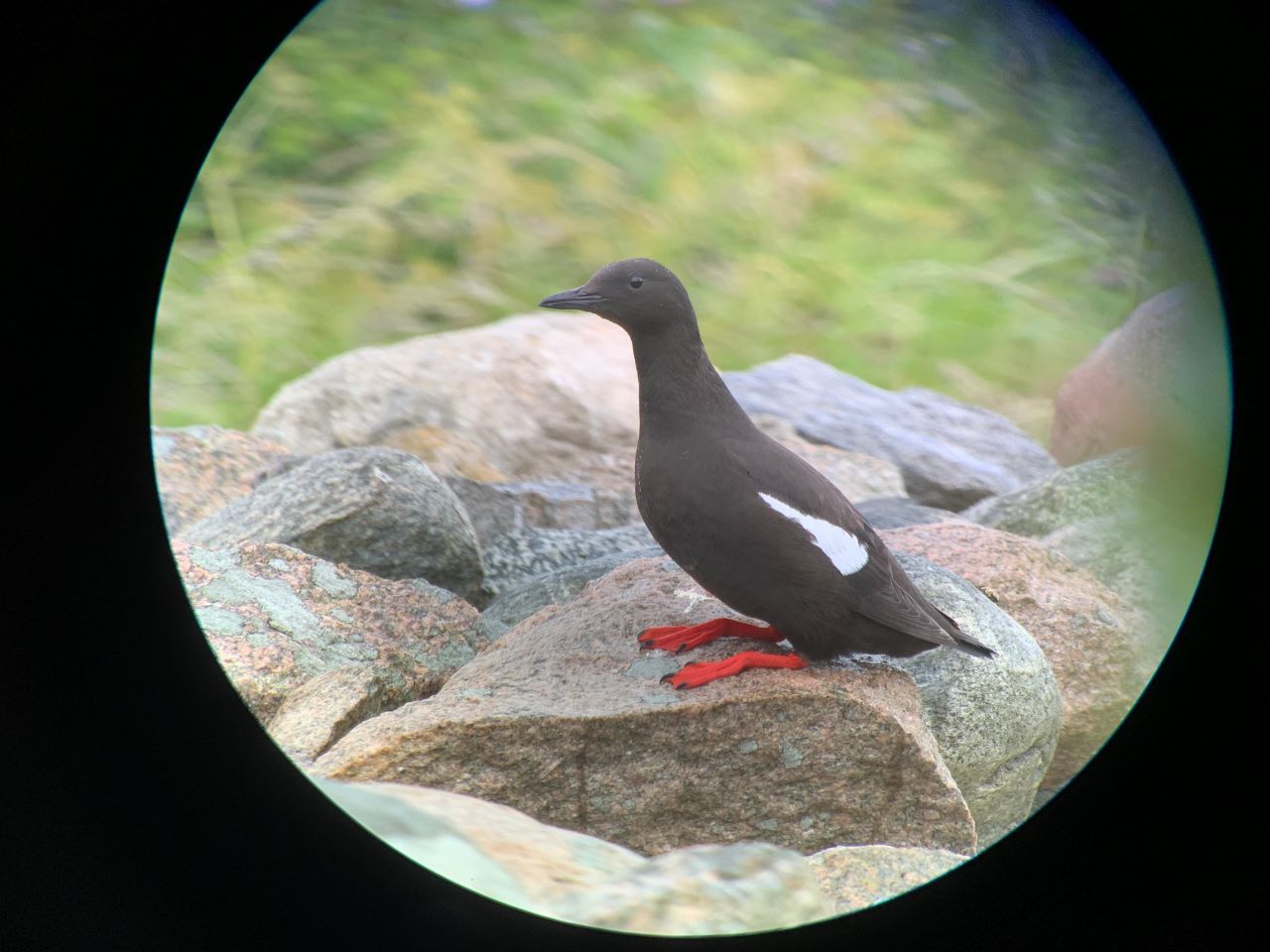
Black Guillemot (Tejst). Photo by: Simon Kiesé.
Once off the boat, we barely made it a few steps onto the harbour before we had to stop to spend time watching and photographing the Black Guillemots (Tejst). I could have stayed in just that spot forever, there was simply so much to see! But we made an effort to explore the rest of the island nonetheless, with such a beautiful start, we knew there was much more excitement in store for us. As we walked through the preset paths, between the old homes, and around the gardens, we were greeted by many Common Gulls (Stormmåge) and their chicks (Pulli) running around, several Black-Headed Gulls (Hættemåge) and their chicks (Pulli) also running around, and quite a few clumsy Red-Breasted Mergansers (Toppet Skallesluger) crash landing into the grass or sea.
Black Guillemot (Tejst).
Common Gull (Stormmåge).
Gull (Måge) chicks (pulli).
Eventually, we found ourselves perched atop an old bunker, scopes pointed North towards Græsholm, scanning for any special birds. As expected, and thanks to a tip from Morten, Simon spotted a European Shag (Topskarv) sitting on top of a rock in a flock of Great Cormorants (Skarv), that was cool! Seán also saw a Rock Pipit (Skærpiber) fly by, but no one else got to see that one (not to worry, though, we all saw a few later on in the day). As we were eating some snacks and scanning the North, we noticed a White-Tailed Eagle (Havørn) flying in, causing hundreds of Great Black-Backed Gulls (Svartbag) and Herring Gulls (Sølvmåge) to jump up from their roost, screaming in a wild frenzy. It was an incredible sight.
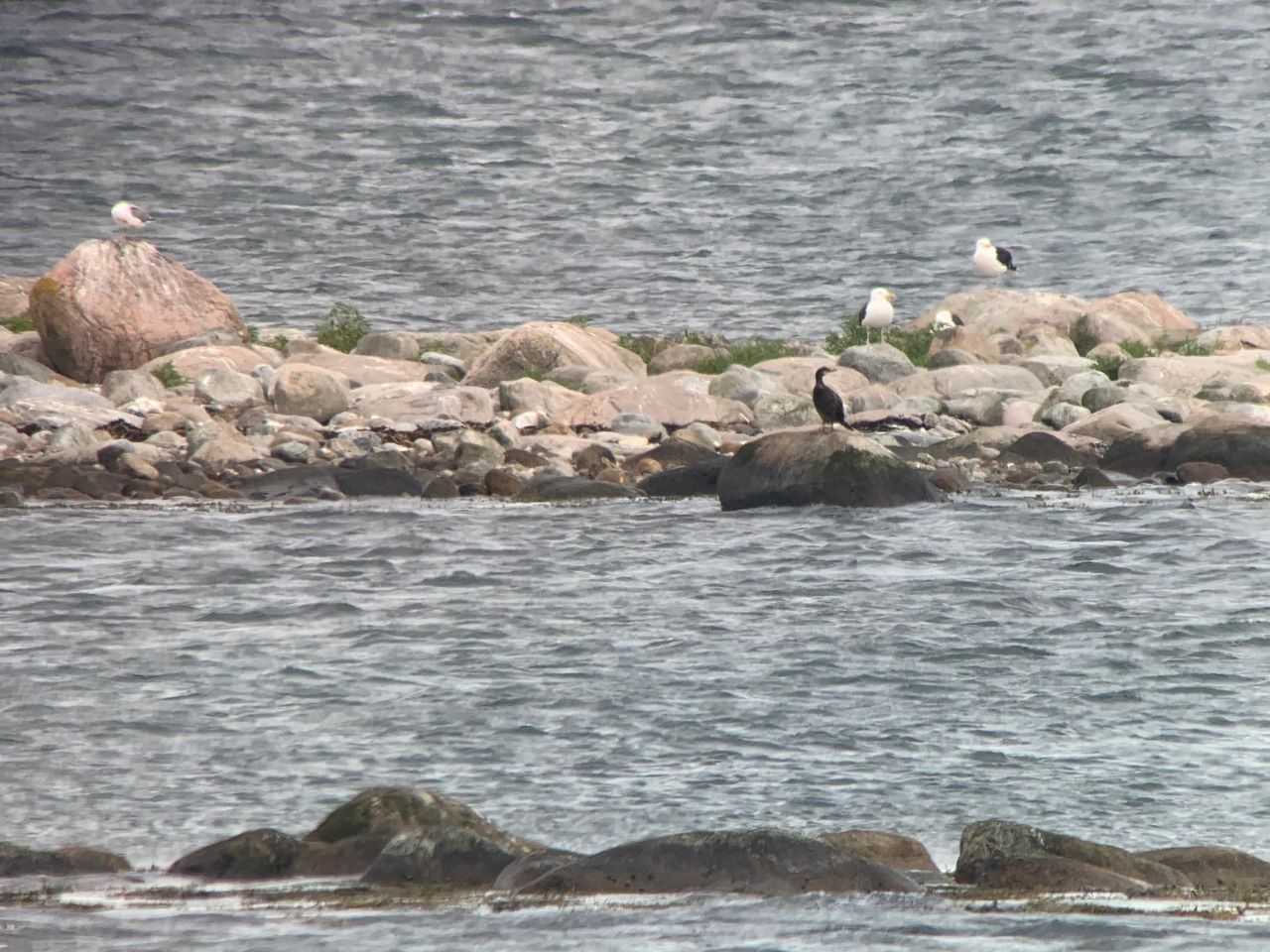
European Shag (Topskarv). Photo by: Simon Kiesé.
Eurasian Oystercatcher (Strandskade).
We made our way back South along the coast of the island, seeing many fun plant, insect, and bird species. Eventually we passed through some woods where we heard a few Great Tits (Musvit) calling. Then we were back at the harbour, this time we continued in the opposite direction, coming across the Black-Headed Gull (Hættemåge) breeding colony, and getting to see lots of Sandwich Terns (Splitterne) perching and fishing. Unfortunately, it also started to really rain during this, so we had to finish exploring the island soggy and cold. Damp, shivering, and hungry, but satisfied in most every way.
Black-Headed Gull (Hættemåge).
Cool jellyfish!
Sandwich Tern (Splitterne).
Thankfully, there wasn’t too much time left before SeaDog came to rescue us, sporting a surprisingly comfortable interior (with a Seal head mounted, watching over us). We were sloshed around rather violently by the sea, but it was the source of many laughs. A free rollercoaster ride, so to say. At one point the SeaDog crew told us it was safe to go outside on the boat again, so naturally we took the opportunity to bounce around in the waves, feeling the spray of the sea on our faces, and pretending we were vikings on a quest to spread the glory of herring on rye bread. Arghh! Onwards!
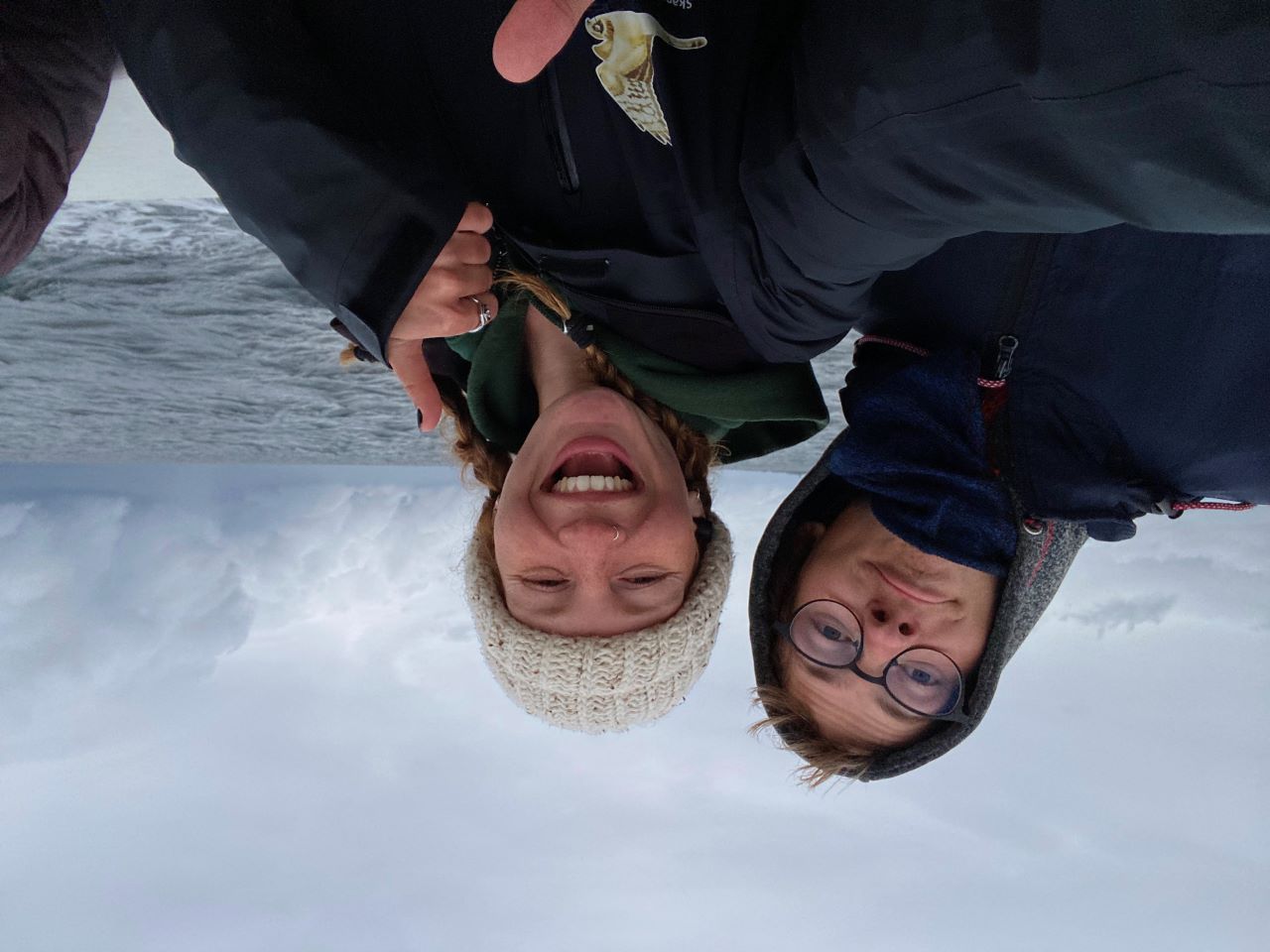
Simon and I braving the storm.
Though it was plenty of fun being out in the waves, it resulted in us being drenched by the time we reached Frederikshavn. The warmth of our cars was a comfort unlike any other, and soon we were on the road again, but not towards the station yet… news of a Sandhill Crane (Prærietrane) reached us through Zello, and conveniently, it was right on the way back for us! Ironically enough, the Sandhill Crane (Prærietrane) was in one of the fields where we had been putting up beetle traps yesterday, near Råbjerg Kirke. Lucky us! We all got an incredible view, snapping pictures of it side-by-side with Common Cranes (Trane), the difference is very evident!
Sandhill Crane (Prærietrane) surrounded by Common Cranes (Trane).
Finally, our adventure came to reach its conclusion. The feeling of being home, warm, clean, and with a full stomach, was heavenly. Immediately we all got to work processing the data and pictures of the day, for here the work is never truly over.
While we were in Hirsholm, Simon (Sr) was hard at work at Kabeltromlen. Though ringing was interrupted by rain, Simon (Sr) and Henrik still managed to ring a few birds. They even caught a Common Whitethroat (Tornsanger) that was ringed in 2019. Then Simon (Sr) joined us at the station for our evening meeting, some planning, and to set up/fix some nets in the old lighthouse garden with Seán and I.
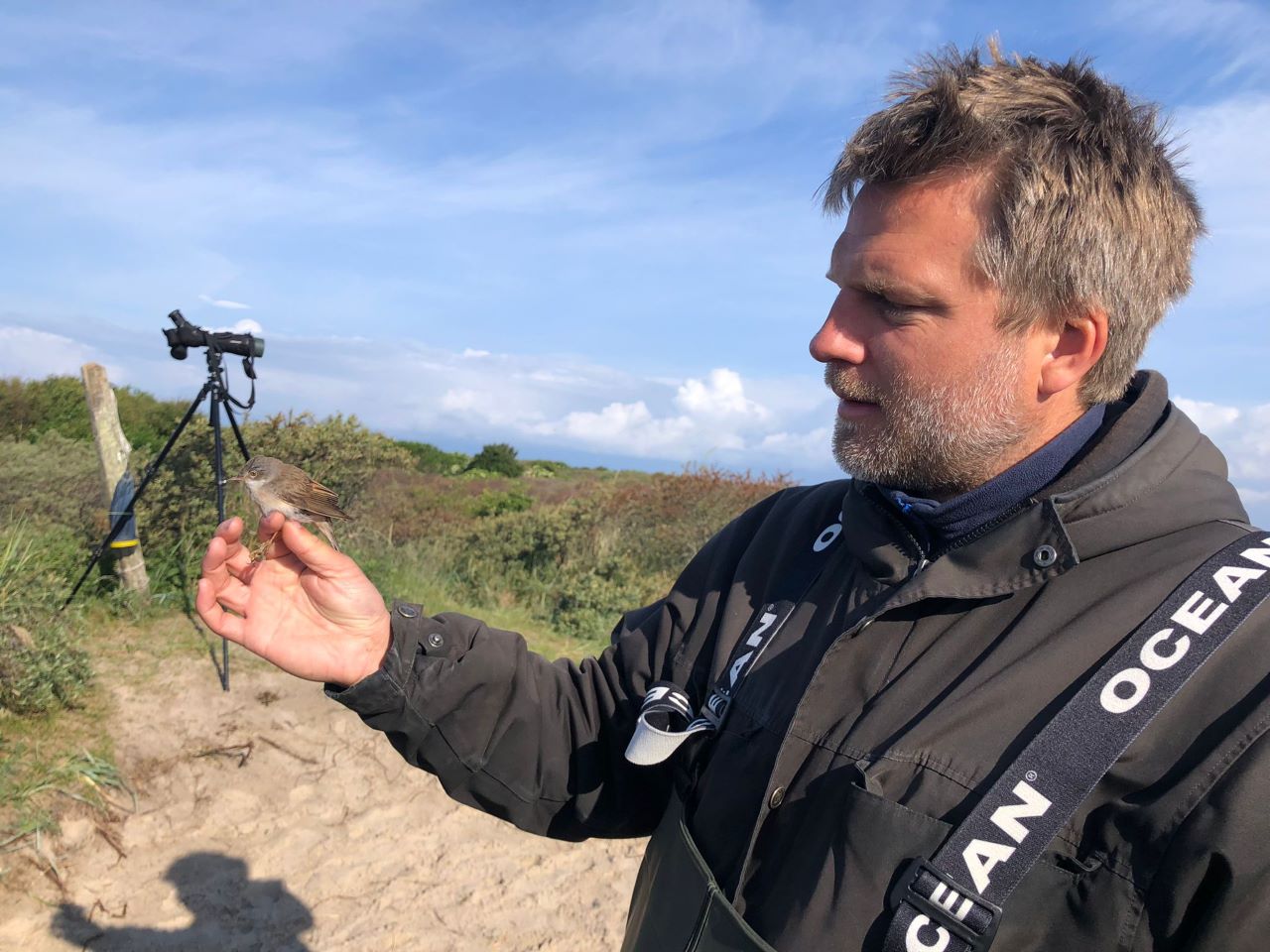
Simon S. Christiansen shows off a recapture Common Whitethroat (Tornsanger) from 2019.
In the meanwhile, Magnus braved the harsh weather to do the migration count. Then he migrated further south to spend time with his “naturalist friend”.
At long last, the beautiful day came to its end. Simon (Jr) prepared a wonderful curry for us, Karen-Marie and Søren took care of drinks and chips (and naan), and we all shared one last meal together before Karen-Marie departs back to Copenhagen tomorrow.
Soon after dinner our beds were calling our names, and our eyelids fell heavy over our eyes. Tomorrow looks quite uncomfortable, there may not be an opportunity to go ringing, but there will be plenty of work to do regardless.
Thank you everyone for such a great day and incredible experience at Hirsholm!
Ringing (Kabeltromlekrattet)
| Reed Warbler |
Rørsanger | 2 | RI | |||||||||||||
| Blackcap | Munk | 7 | RI | |||||||||||||
| Icterine Warbler | Gulbug | 1 | RI | |||||||||||||
| Common Whiterhroat | Tornsanger | 1 | RI | |||||||||||||
| Marsh Warbler | Kærsanger | 1 | RI |
Total: 12
Today’s observations in Dofbasen from observers in the area.
Sum of the raptors in the area based on observations typed into Dofbasen the same day.
People: Seán Walsh, Hayley Land, Isis Khalil, Magnus Houen Lauritsen, Simon Kiesé, Simon S. Christiansen, Karen-Marie and Søren Leth-Nissen, Lars Yttte & Sussi, Morten Christensen, Henrik Knudsen, Laila Neerman.
